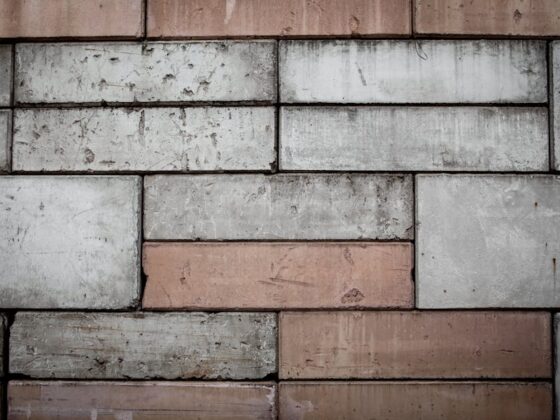The cleanliness and maintenance of sleeping bags are essential aspects of outdoor gear care that often go overlooked. Sleeping bags, be they down or synthetic, serve as crucial companions on adventures, offering warmth and comfort during outdoor excursions. Over time, they accumulate dirt, sweat, oils, and other contaminants that not only affect their performance but also pose potential health hazards. This article explores the why, when, and how of washing sleeping bags, shedding light on the importance of maintaining a clean sleep system. By following the guidelines outlined in this article, outdoor enthusiasts can ensure their sleeping bags remain in optimal condition, guaranteeing a safe and comfortable night’s rest during their adventures.
Can You Wash Sleeping Bags?
Yes, you can wash sleeping bags. However, the process differs depending on the type of sleeping bag (down or synthetic) and its manufacturer’s care instructions. Regular cleaning is essential to maintain hygiene and extend the life of your sleeping bag. Always follow the specific guidelines provided by the manufacturer to avoid damaging the insulation or fabric.
Why Washing Sleeping Bags Is Important?
Washing sleeping bags is important for several reasons:
Hygiene: Sleeping bags accumulate sweat, body oils, dirt, and other contaminants over time, creating an unsanitary environment. Regular washing helps prevent the growth of bacteria and fungi, ensuring a clean and healthy sleep space.
Odor Control: Dirty sleeping bags can develop unpleasant odors. Washing removes these odors, making your gear more pleasant to use.
Performance: Contaminants can affect the insulation’s effectiveness, leading to reduced warmth. Cleaning restores the loft, maintaining the bag’s warmth and comfort.
Longevity: Proper care through washing and maintenance extends the lifespan of your sleeping bag, preserving your investment.
Comfort: A clean sleeping bag provides a more comfortable and enjoyable outdoor sleeping experience.
When To Wash Your Sleeping Bag?
Knowing when to wash your sleeping bag is crucial for maintaining its cleanliness and performance. Here are factors and signs to consider:
- Usage Frequency: If you frequently use your sleeping bag, it may require more frequent cleaning. Heavy use in dusty or humid conditions accelerates dirt accumulation.
- Activity Type: Intensive activities like backpacking or camping in adverse conditions increase the likelihood of your sleeping bag getting dirty quickly.
- Climate: Sleeping bags used in humid environments or near water bodies are prone to moisture and mold, requiring more regular cleaning.
- Visible Stains: If you notice visible stains or spots on your sleeping bag, it’s a clear indication that it needs cleaning.
- Loss Of Loft: When your sleeping bag’s insulation no longer fluffs up or provides adequate warmth, it’s time for a wash.
- Unpleasant Odors: If your sleeping bag emits unpleasant odors even after airing it out, cleaning is necessary to remove the smells.
- End Of Season: Consider washing your sleeping bag at the end of each outdoor season before storing it to prevent contaminants from settling in over time.
How To Wash Your Sleeping Bag?
Washing your sleeping bag is essential for maintaining its cleanliness and performance. The method you choose will depend on whether you have a down or synthetic sleeping bag. Here are step-by-step instructions for washing both types:
1. Washing A Down Sleeping Bag:
- Check The Care Label: Read the manufacturer’s care instructions provided with your sleeping bag. Always follow these guidelines.
- Spot Cleaning: If there are localized stains or dirt, try spot cleaning with a mild detergent and a soft brush or sponge.
- Prep The Washing Machine: Use a front-loading, large-capacity washing machine without an agitator. Set it to a gentle cycle with cold water.
- Use A Down-Specific Detergent: Use a down-specific detergent, as standard detergents can damage down feathers. Follow the product’s instructions for the right amount.
- Load The Bag: Place the sleeping bag in the machine, ensuring it has enough room to move freely.
- Wash With Care: Start the machine, and let it go through the gentle cycle with minimal agitation. Avoid using fabric softeners or bleach.
- Rinse Thoroughly: Run the machine through an additional rinse cycle to remove all detergent residues.
- Dry Carefully: Remove the sleeping bag from the machine and gently squeeze out excess water. Place it in a large dryer with clean tennis balls or dryer balls to help fluff up the down. Use a low heat setting and check the bag regularly to prevent overheating. It may take several cycles to dry completely.
2. Washing A Synthetic Sleeping Bag:
- Check The Care Label: Review the manufacturer’s care instructions for your synthetic sleeping bag.
- Spot Cleaning: Address localized stains or dirt by spot cleaning with a mild detergent and a soft brush or sponge.
- Prep The Washing Machine: Use a front-loading, large-capacity washing machine. Set it to a gentle cycle with cold water.
- Use a Mild Detergent: Choose a mild, non-detergent soap or a specialized synthetic sleeping bag cleaner. Follow the product’s instructions for the right amount.
- Load The Bag: Place the synthetic sleeping bag in the machine, ensuring it has enough room to move freely.
- Wash With Care: Start the machine, and let it go through the gentle cycle. Avoid using fabric softeners or bleach.
- Rinse Thoroughly: Run the machine through an additional rinse cycle to remove all detergent residues.
- Dry Properly: Remove the sleeping bag from the machine and gently squeeze out excess water. Lay it flat on a clean, dry surface or hang it to air dry. Ensure it’s fully dry before storing it to prevent mildew.
Caring For Your Sleeping Bag After Washing
Caring for your sleeping bag after washing is essential to maintain its performance and longevity. Here are steps to follow:
- Remove Soap Residues:After washing, rinse your sleeping bag thoroughly to remove any soap residues. Residues can reduce the bag’s loft and effectiveness.
- Restore Loft:Gently shake and fluff the sleeping bag to restore its loft and insulation. Ensure it regains its original shape and volume.
- Dry Completely:Ensure your sleeping bag is completely dry before storing it. Any moisture left inside can lead to mold or mildew growth.
- Store Uncompressed:Store your sleeping bag uncompressed in a large, breathable storage sack or hang it in a cool, dry place. Compressing it for extended periods can damage the insulation.
- Avoid Direct Sunlight:Do not expose your sleeping bag to direct sunlight for prolonged periods as UV rays can weaken the fabric and insulation.
- Use A Sleeping Bag Liner: Consider using a sleeping bag liner to reduce the need for frequent washing. Liners can be easily removed and cleaned separately.
- Spot Cleaning:Address any new stains or localized dirt promptly with spot cleaning to prevent them from becoming more challenging to remove.
Conclusion
In conclusion, maintaining a clean and well-cared-for sleeping bag is vital for both hygiene and outdoor comfort. Regular washing, proper drying, and attentive post-wash care ensure that your sleeping bag remains a reliable companion during your adventures. By following manufacturer guidelines and avoiding common mistakes, you can extend the life of your sleeping bag, preserving its insulation, warmth, and overall performance. Remember, a clean sleeping bag not only enhances your outdoor experience but also contributes to your safety and well-being in the wild. Make gear care a priority and enjoy countless cozy nights under the stars.
FAQ’s
Can I Wash My Sleeping Bag In A Top-Loading Washing Machine?
It’s recommended to use a front-loading machine for washing sleeping bags to prevent damage to the insulation. Avoid top-loading machines with agitators.
Can I Use Regular Detergent To Wash My Sleeping Bag?
It’s best to use a specialized down or synthetic sleeping bag detergent to avoid damaging the insulation. Standard detergents can strip natural oils from down and reduce loft.
Can I Tumble Dry My Sleeping Bag On High Heat?
No, it’s important to use low heat when tumble drying a sleeping bag to prevent overheating and potential damage to the insulation.
How Often Should I Wash My Sleeping Bag?
The frequency depends on usage, but as a general guideline, consider washing it after every 5-10 uses or when you notice signs of dirt, stains, or odor.
Can I Store My Sleeping Bag In Its Stuff Sack For Long Periods?
It’s not recommended to store your sleeping bag compressed for extended periods as it can damage the insulation. Use a breathable storage sack or hang it in a cool, dry place instead.








